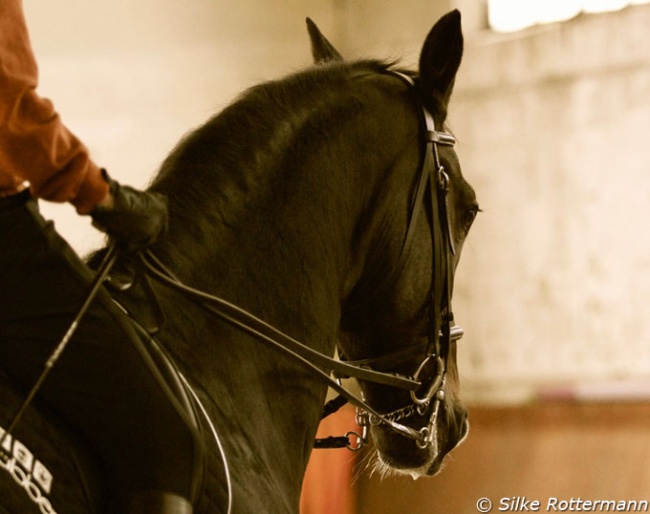
There is no excuse for using a heavy rein contact. Sometimes riders say that some horses need a firm contact, that they need support or help from their riders in form of “more contact” on the reins. Some riders even tell that their horses like the pressure and they claim that the horse is being steadier or that the horse moves better and happier that way. When a horse leans on the bit and becomes heavy in the contact, it’s often said to happen because the horse doesn’t have enough strength. If this is the case, something is done wrongly and we should really pay attention on the way the horse is moving.
Basic movements do not require a huge amount of strength, it's more like a game of balance and coordination and there should always be short possibilities for some rest before we go way beyond the limits of capacity in the moment. If basic works is done correctly, even the more difficult exercises will be possible in an easy and harmonious way at a later stage. Training is not always easy and there must be room for errors, but we should always aim for good, balanced movement and frames, in which heavy rein pressure is not allowed from the beginning, even if the horses may suggest that in these moments where balance is momentarily lost. This will take more time in the beginning, but it will make sustainable training progress possible.
A Good Seat Allows for Good Contact
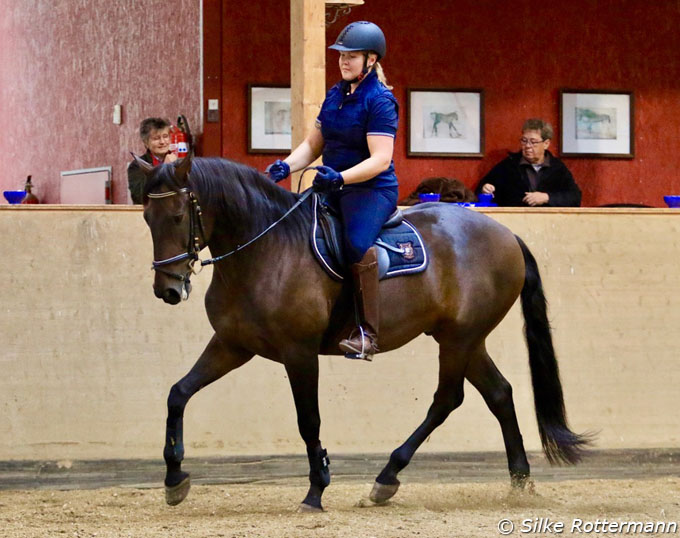
an idea of following the hand.
The rein contact is a very informative way of communication, and it should be a way to sense the slightest changes in the balance of horse. Pressure is tension and that must be addressed and corrected right now, not after a year or two. A good seat makes a good contact possible, but the seat itself is no guarantee for the quality of contact.
A good hand thinks forward, but it doesn't give too much – there should remain a light connection for communication. A good contact also requires a good frame – a too deep head-neck-position doesn’t allow the neck to function optimally and naturally, which affects the balance and the movement.
Pressure Disturbs the Balance
Sometimes riders tend to act backwards, unconsciously. This is an automatic reflex if the rider becomes tense or afraid or if the balance is not optimal. Some riders use backwards rein aids on purpose to control the horse, and this is not very helpful for the horse which is trying to find a good balance. Riders also tend to react on horses’ resistance by keeping a tighter grip on the reins, which easily leads to a circle of excessive pressure and pulling the reins. Instead of holding the reins stubbornly until the horse gives, we need to teach the horse to relax and trust the bit, and to maintain a light yet flexible contact where the horse follows the rein aids to all useful directions.
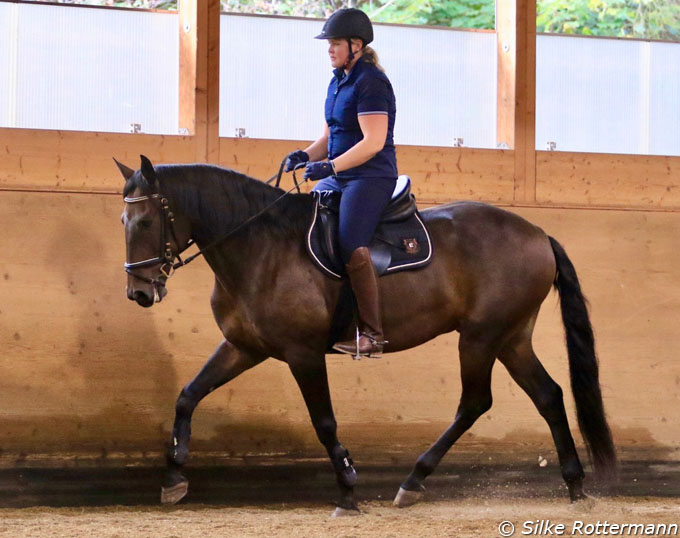
to lengthen the frame.
It feels unrealistic to think that in sports we would not take this kind of possibility in optimal use. When we focus on a good contact as part of good training it can only improve the welfare of the horse. The tack must fit the horse, but even with a fitting tack we must remember that the way a rider uses this bit defines the effect of this bit – a fitting basic bit is no problem in good hands, but even the fanciest anatomical bit becomes a weapon in bad hands.
Create A Light Contact
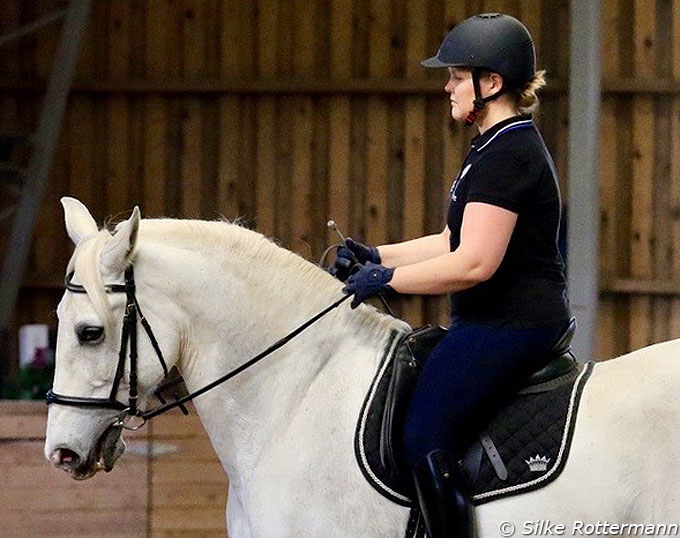
These are some commonly used techniques, that usually help with most cases:
In the German approach take and give on both hands can be one way to correct the situation if the horse is just about to become tense. The rider lifts both hands along the mane, giving the contact away for a few strides, allowing the horse to balance itself and keeping the horse thinking forward („überstreichen“). With some horses this works really well, and with others it feels good to try another variation.
From French approach’s point of view it is also possible to maintain the contact while correcting this. The rider can use a half halt slightly upwards (by closing the hand softly but firmly), at same time he is lifting both hands a little towards the horses ears the same way as in the German approach and gives, but with remaining the rein contact and without leaning forward or putting more pressure on rein. Correctly done this correction is quick, soft and precise. If it is done too slowly or the direction is not forward-upwards, it may cause even more tension.
Right after any of these corrections the rider lowers and relaxes the hand. To do this correctly it is important for the rider to keep the shoulders relaxed and sit deep down in the saddle, adding the leg aid preferably right after the correction. To make rein correction work, it is extremely important that the rider is very precise and relaxes the hand and softens the fingers immediately after the rein aid – optimally the relaxing needs to be as quick as a reflex. The thing is to teach the horse a way out of the pressure and give a better option with a lighter contact. This will help the horse to understand that it will be easier to move without pushing against the rein. This also requires, that the rider doesn’t maintain the heavy grip afterwards, which needs some practice.
There’s No Inborn Bad Mouth
No horse is born with a bad mouth, and horses with different neck conformations and temperaments can all be taught to remain relaxed. It is all about how we teach the contact to our horses, and good progressive classical training takes care of this day by day.
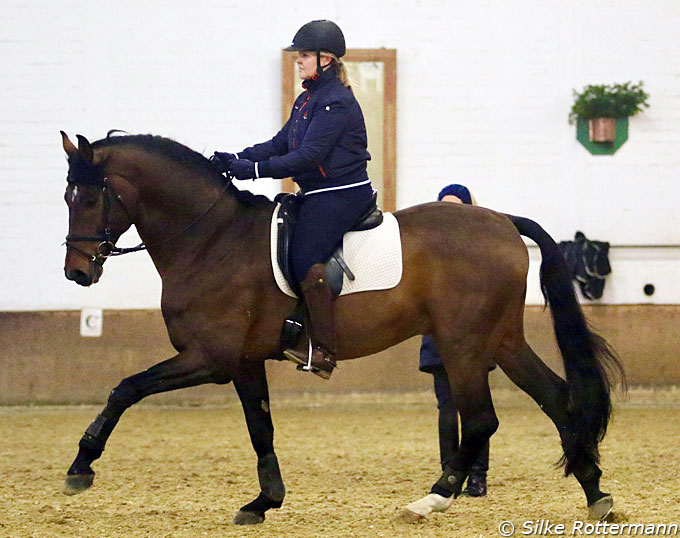
My trainer Colonel Carde says,"Always ride in the best possible balance of the day" and this can be a daily goal. A good rider has a great sense of balance, stays positive and is aware there is always room for improvement.
By Niina Kirjorinne - Photos © Silke Rottermann
In the next parts of this series Niina Kirjorinne will be addressing the how the fine motor skills of the fingers affects the rein pressure and how the horse’s mouth functions.
Related Links
Functionality in Equitation: Resetting the Leg Aids
Functionality in Equitation: Skin Damage from Leg Aids
Functionality in Equitation: The Forward Thinking Hand
Functionality in Equitation: Balance, the Key in Equitation
Functionality in Equitation: Aim for Good Movement
Functionality in Equitation: Fascia Treament - Surface Has a Deep Effect
Functionality in Equitation: Fascia and Movement